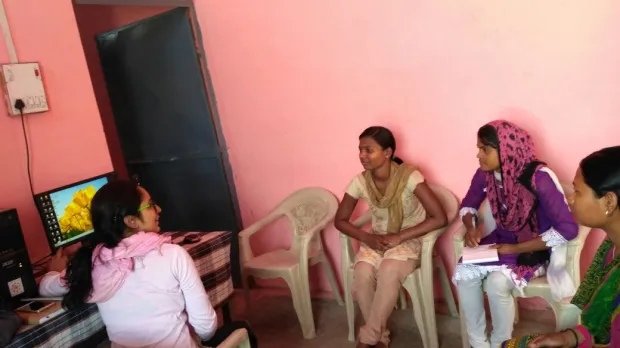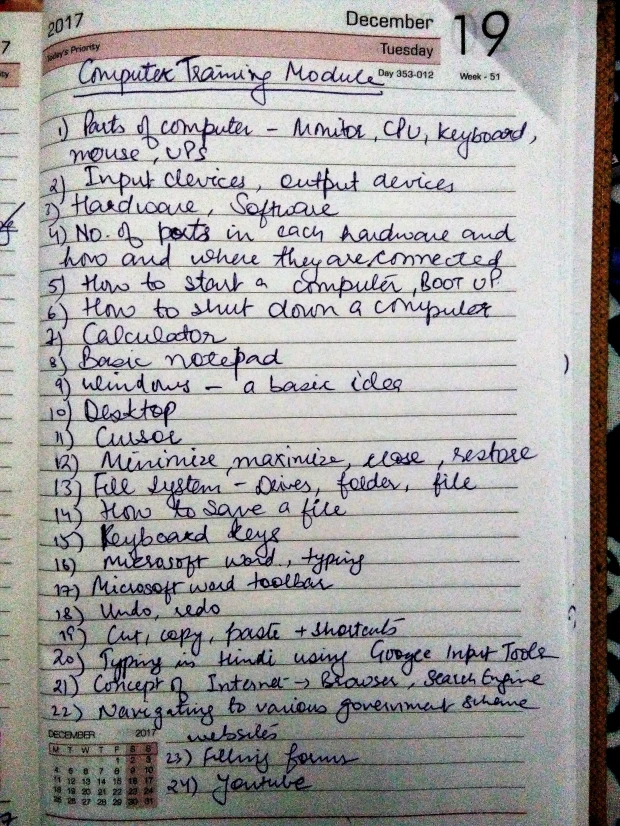
Ray of hope Part 2 – A rise of digital education in India
A Ray of Hope in Silpatti Panchayat
After experiencing multiple failures, I found a ray of hope in Silpatti panchayat. The project initially had only three students in the first class, but gradually, more people started attending, with at least 12 people attending at least one class. The best attendance was ten people on the day of a quiz.

The students varied in age from 18 to 24, and their educational qualifications ranged from 10th failed to college pass-outs. None of them knew how to use a computer, but they were all aware of its significance in their lives. They needed it to check for job vacancies, fill job application forms, and avail schemes. So, I designed the course material in a way that provided them with knowledge that would help them in their lives, not something that they didn't want.
The Course Material

The course started with the basics like the parts of a computer, input and output devices, the CPU, and how the parts are connected to each other. Then we progressed to how to switch on a computer, how to hold a mouse, and how to shut down the computer. Every student spent five minutes in the first couple of classes to get familiarized with how the mouse works – how to hold it, how far the cursor moves when the mouse is moved a certain degree, how to click.
The course then progressed to familiarizing students with the keyboard, concepts such as the desktop, how to open applications such as notepad, calculator, MS word. The class also taught students how to navigate to relevant websites using a search engine, typing on MS word, basic features of MS word, typing in Hindi using Google Input Tools, and file system management.
Also Read: Part 1: Digital Education in India: Bridging the Knowledge Gap
The Progress
I am pleased with the progress made by the students so far. They have gained confidence in interacting with computers and are now getting good at using Google and looking for various government schemes and job opportunities. They are becoming proficient in using the internet, and I hope they will soon talk about it the same way they talked about using a mouse in the beginning.
The Way Ahead

The next step for these students is to use this knowledge to help their fellow villagers. Armed with a laptop and 4G Jio internet connection, we took a village walk and met women from a couple of self-help groups (SHGs). The students showed the women what they learned in class, such as how to apply for a toilet grant under Swachh Bharat Mission and how to watch videos about relevant topics such as organic farming and mushroom cultivation on YouTube.
The response from the women was enthusiastic. They came forward with their queries on a number of issues, such as PM Awaas Yojana, Ujjwala Yojana, Ration card coupons, to name a few. The students were happy to help, and it gave them confidence that their knowledge was valuable.
It also started a dialogue about what was happening in the village and whether the Sachiv was active in his efforts. Being privy to information has motivated them to attend the Gram Sabha meetings, and they now have a greater voice in the development of their village.
Also Read:Life Skills Training for Youth: A Solution to Stable Income in Kherwada, Rajasthan
Conclusion
Digital education in India has the potential to bring a significant change in the lives of rural people. It can help bridge the gap between urban and rural areas by providing access to education and information. The rise of digital education in rural India is a ray of hope, and with the right kind of effort, it can become a pleasant sunshine, providing bright opportunities to the underprivileged.
By Mehak Aggarwal



Comments
Trackbacks & Pingbacks
[…] Read the 2nd part: Ray of hope Part 2 – A rise of digital education in India […]